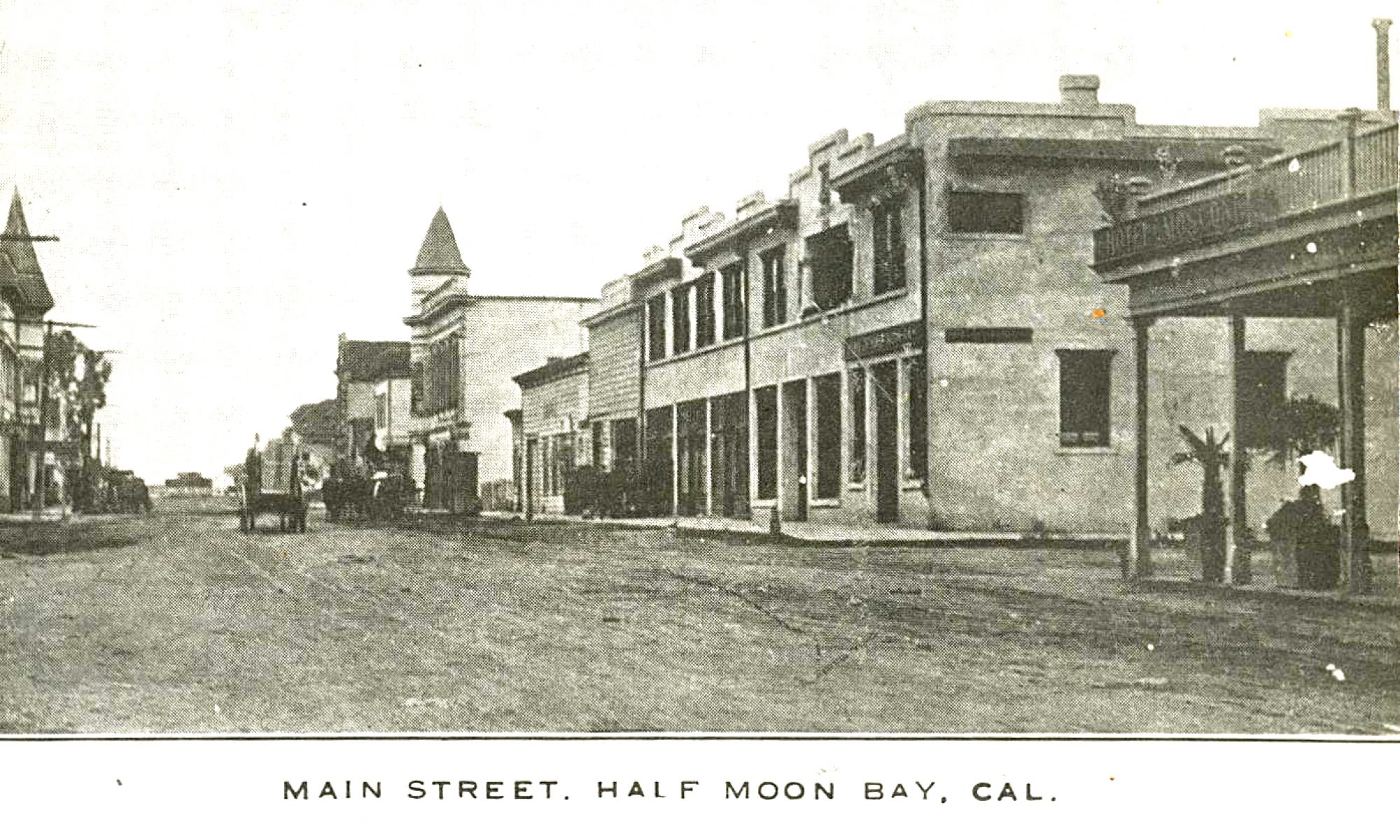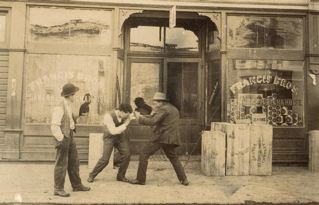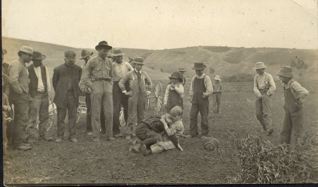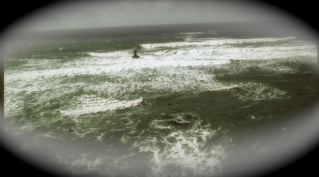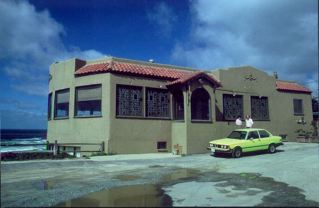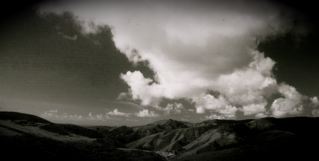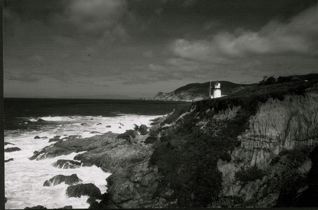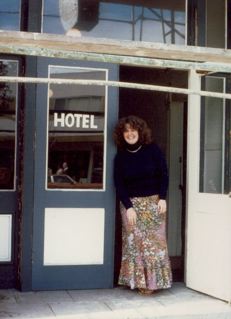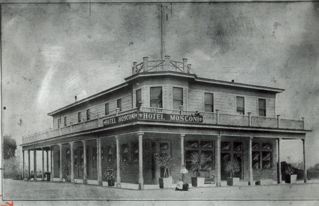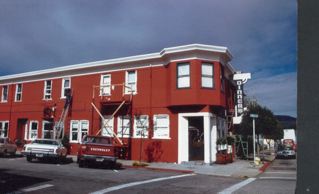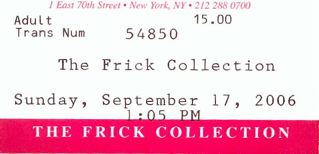What is it?
You can see it in the Pacific Ocean west of the Moss Beach Distillery–you can see it from the tidepools and the dreamy Cypress forest.
What is it?
It’s a concrete wall that dates back to WWII when it was erected to warn commercial fishermen and aircraft of the target practice range in the vicinity.
October’s The Month For Moon-Dancing
Downtown San Mateo Needs A Sidewalk-Lift
I love what’s happened to downtown San Mateo. The new shops, the cute restaurants, the sidewalk cafes, very nice.
But when you look down at the sidewalks, mostly on 4th Ave, all the delicious appeal of dining out is lost. The sidewalks are grimy–downright dirty–in some places, filthy is the word.
Certainly doesn’t do much for enjoying a meal, particularly near the sidewalk cafes.
Don’t know whose responsibility the sidewalks are–but I’m not that anxious about showing off downtown San Mateo to friends from out-of-town.
Sybil & Louis at Tunitas Creek: (Short Version) (Part I)





Dressed in ribbons and bows, Sybil Easterday was a precocious little girl who felt comfortable reciting poetry before audiences.
But as a young, eccentric sculptress at the turn of the century, she gained notoriety preferring the comfort of men’s trousers to the dainty frocks worn by her contemporaries.
Newspapers in New York City and San Francisco ran amusing pieces about the beautiful young woman from Tunitas Creek, south of Half Moon Bay. Sybil, a graduate of San Francisco’s Mark Hopkins School of Art, did not understand all the fuss.
She thought it quite natural to wear practical clothing while dipping her fingers into the tubs of wet, sticky plaster that she used to mold portrait busts.
As the sole female finalist in a competition to do a bust of President William McKinley for the City of San Jose, Sybil enhanced her reputation. She lost in the finals and took off for Mexico.
She thrived in Mexico’s artist colony, mailing smiling photographs of herself and new friends to her parents at Tunitas Creek. This may have been her happiest, most productive creative period.
Before the 1906 earthquake, she returned to the Coastside. But as time passed, Sybil painted and sculpted less and less. She enjoyed hosting large dinner parties and designed lovely, individually hand-printed menus for these affairs.
In late 1915, Sybil wed Louis Paulsen, a wealthy young bachelor from San Francisco. They probably met through the prominent Wienke family, who operated a resort hotel at Moss Beach–near the tracks of the Ocean Shore Railroad.
Sybil and her husband resided at the isolated Tunitas Creek home with Flora, her widowed mother.
Perhaps it was symbolic that Sybil’s life was interwined with the Ocean Shore Railroad, originally planned to extend as far as Santa Cruz. But the doomed Ocean Shore ran out of money and the tracks never got farther than Tunitas Creek, a few steps from the artist’s home. Passengers wishing to travel farther south climbed aboard a large touring car for the long, dusty trip to Santa Cruz.
…To Be Continued…
Photo: Courtesy San Mateo County History Museum. Visit the new gallerys at the San Mateo County History Museum at the historic Redwood City Courthouse in Redwood City.
Outside The San Benito House, HMB–1970s
Back To New York: The Frick, My Favorite [Private] Museum
The Frick
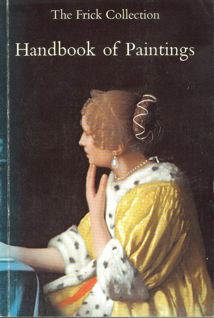
They have the original Vermeer “Mistress and Maid” [1665-70] –seen here. When you see this painting in person, you’ll see the maid she’s having a “conversation” with, and you’ll wonder what they could be talking about. It could be anything–you make it up.
They’ve got Rembrandts & Gainsboroughs & Turners & Whistlers & Titians & on & on, all in Mr. Frick’s historical home. Imagine how he lived while walking through his historical home.. Guaranteed to blow you awayPhoto: The Frick’s garden:
From the(1978) handbook: “The Frick Collection was founded by Henry Clay Frick (1849-1919), the Pittsburgh coke and steel industrialist. At his death, Mr. Frick bequeathed his New York residence and the most outstanding of his many art works to establish a public gallery for the purpose of “encouraging and developing the study of the fine arts.” Chief among his bequests, which also included sculpture, drawings, prints, furniture, porcelains, enamels, rugs, and silver, were one hundred thirty-one paintings. Thirty-eight additional have been purchased over the years by the Trustees from an endowment provided by the founder.
“Mr. Frick grew up in the vicinity of Pittsburg. From an early age he was interested in art, and his acquisitions recorded ov er a span of forty years show a continuing development of knowledge and discernment. After initially concentrating on Salon pictures and works by the Barbizon school, he purchased his first old masters around the turn of the century. In the next decade he acquired many of the distinguished paintings that established the character of the Collection as it is seen today. ….”
The collection will amaze you.
Beautiful Hair On A Beautiful Coastside Lady
A Story About Antique Maps That Took A Sexy Twist
There were times the search for Coastside history led me to the countyâs architecturally uninspiring offices in Redwood City âand one day in the 1970s I was searching for maps of the original ranchos. Of Guerrero, Vasquez and Miramontes.
In the language of acreage, the old ranchos seemed immense: I was anxious to see a map with the actual boundary lines.
An all- business lady wearing a dark suit directed me to an office, identical to the others, but this one was the home of the man Iâll call âthe Keeper of the Mapsâ?.
I got the feeling heâd inhabited this space forever. He knew every townâs outline and shape and what the ..â¦.., ========== and { } meant. All the codes and symbols. He knew the name of every creek and hollow. Heâd lived in San Mateo County all his life and felt a special affection for the Coastside.
He was gracious: âMaps of the original ranchos? Do you want copies?â?
The encounter was brief but the “Keeper of the Maps” made a lasting impression. Someday, I thought, he might make a good story.
Decades later I was ready to write that storyâ it had been a long timeâwas he still tending his maps? was he alive?âAnd in the course of tracking him down, I sadly found his obituary.
Not the first time I had been too late.
But within the obit were the names of siblings. Aha! I thought, Iâll interview one of his relatives.
I’ve had stories take a sharp turn and go in an unexpected direction before–but never one so delightfully surprising.
One of the names was listed in the phone book. I called her, it was the map man’s sister, she was friendly and invited me to her home– one of those endless apartment complexes, hard to tell where it began and ended. Iâd been there before on an interview: a lot of seniors lived quiet, eventless days and nights there.
I can still see her standing at the end of the long, barren hallway. Outside of her apartment, awaiting me.
She was a knockout. I couldnât tell her ageâbut she had to be in her 70s. Her hair was brown, for cut and style, think Barbra Stanwyck. Her skin was smooth and wrinkle-less. I swear!
When she saw my notebook, she warned: âMy daughterâs a lawyer. Watch what you write.â?
She was gorgeous– âNo, Iâve never dyed my hair. No, Iâve never had a facelift, or use botox.â?
She was the sexiest old lady Iâd ever seen. I was stunned. In all my years of interviewing seniors, Iâd never see such a good looking old lady
I explained I was there to talk about her brother, the âKeeper of the Mapsâ?âbut when I asked questions about him, she gave one -word answers and then steered the conversation to herself, shocking me with tales of her active love life.
That night this widow of a prominent businessman was looking forward to a date with a new boyfriend. She couldnât wait. Every time the phone rang, and it did ring several times, she tittered like a teenager hoping it would be him. And one time it actually was.
âI’m not going to tell him I’m 82,â? she said conspiratorially. âHe thinks Iâm in my 70s. I kissed him on our first date.â?
Then, yet another another phone callâthis from a retired television executive whose name I recognizedâ¦he was calling to ask if he could stay the night. Wow!
She made it clear the interview was near an end and I left having made zero progress on my âKeeper of the Mapsâ? story. Not only that but I struck out twice. What I learned about her I couldnât really use; it would have been indiscreet.
Now enough time has passed that I feel I can tell a little about that gorgeous babe.
I didnât learn very much about maps– but I sure learned that some seniors have a torrid love life.
